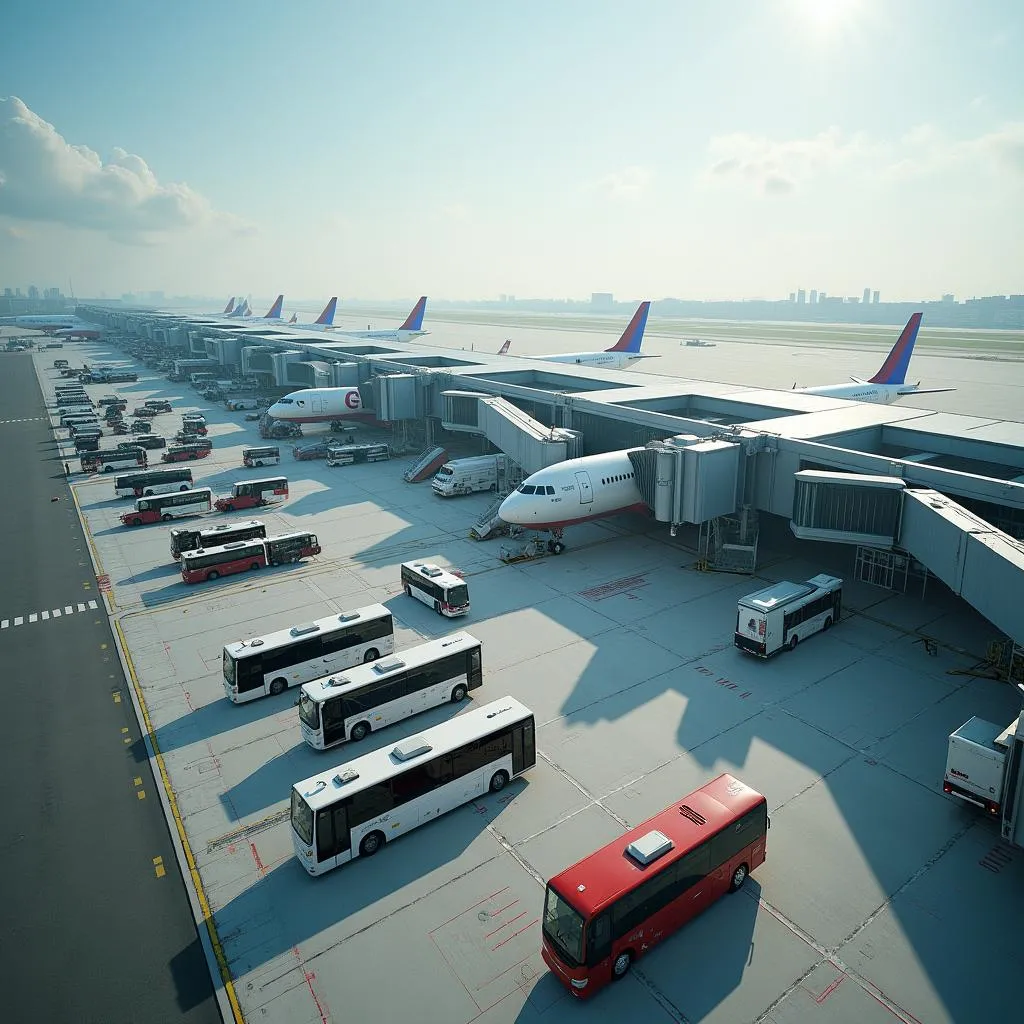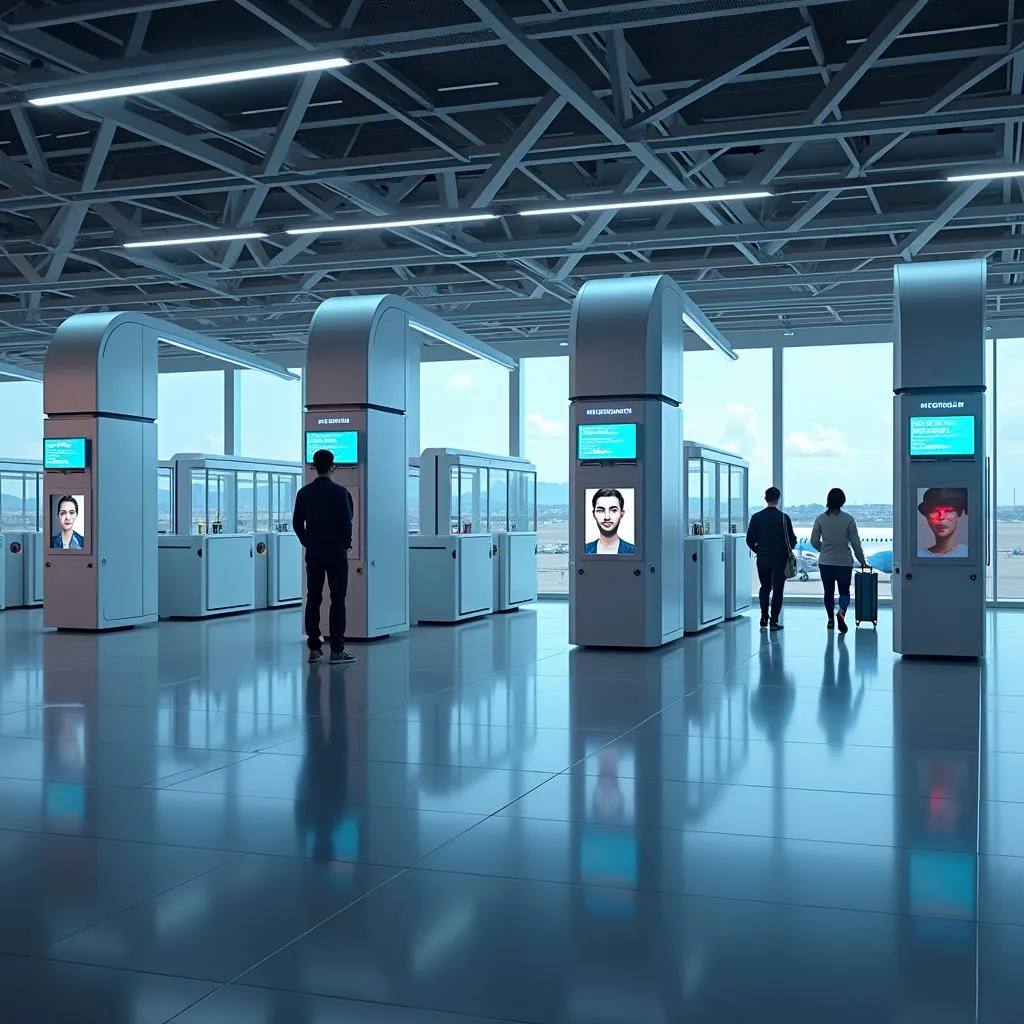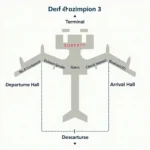The Airport Main Gate is the first point of contact for millions of travelers every day, serving as the crucial link between the outside world and the exciting journey that lies ahead. It’s more than just an entryway; it’s a symbol of adventure, a gateway to new experiences, and a hub of activity that sets the tone for the entire travel experience.
The Airport Main Gate: First Impressions Matter
 Modern airport main gate entrance with large glass windows and signage.
Modern airport main gate entrance with large glass windows and signage.
The airport main gate is the first impression passengers have of an airport, and it plays a critical role in shaping their overall perception. A well-designed and efficient main gate can ease anxieties, create a sense of excitement, and leave a lasting positive impression. Conversely, a poorly designed or congested main gate can lead to frustration and stress, impacting the passenger experience from the very start.
Key Functions of an Airport Main Gate
The airport main gate serves several essential functions, all designed to ensure the smooth and secure flow of passengers and their belongings:
- Security Checkpoint: This is arguably the most important function of the airport main gate. Security personnel and advanced screening technology work together to ensure the safety of all passengers and crew by screening for prohibited items and potential threats.
- Passenger Check-in: The main gate houses check-in counters for various airlines, allowing passengers to obtain their boarding passes, check their luggage, and confirm their flight details.
- Baggage Handling: Behind the scenes, a sophisticated baggage handling system operates efficiently to sort, screen, and load luggage onto the correct aircraft.
- Transportation Hub: The main gate often serves as a transportation hub, connecting passengers to various modes of ground transportation such as taxis, buses, rental cars, and public transit.
Types of Airport Main Gates
 Aerial view of an airport terminal with multiple gates and aircraft.
Aerial view of an airport terminal with multiple gates and aircraft.
Airport main gates can vary in size, design, and functionality depending on the airport’s size, location, and traffic volume. Some common types include:
- Centralized Main Gate: A single, large main gate that serves the entire airport. This design is common in smaller airports.
- Decentralized Main Gates: Multiple main gates spread throughout the airport, each serving a specific area or concourse. This design is common in larger airports.
- Curbside Check-in: Some airports offer curbside check-in facilities at the main gate, allowing passengers to check their luggage and obtain boarding passes without entering the terminal building.
The Evolution of Airport Main Gates
Airport main gates have evolved significantly over the years, driven by advancements in technology, security measures, and passenger expectations. Early airport gates were often basic and open-air, with passengers walking across the tarmac to board their aircraft. Today, main gates are sophisticated, climate-controlled spaces, offering a range of amenities such as shops, restaurants, and lounges.
Quote from John Smith, Airport Architect: “Modern airport main gates are designed to be more than just a point of entry. They are now welcoming spaces that offer passengers a seamless and enjoyable transition from the outside world to the excitement of air travel.”
Future of Airport Main Gates
 Futuristic airport gate with biometric scanners for seamless passenger processing.
Futuristic airport gate with biometric scanners for seamless passenger processing.
The future of airport main gates is likely to be shaped by continued advancements in technology, with a focus on automation, efficiency, and enhanced passenger experiences. Some potential innovations include:
- Biometric Technology: Facial recognition and other biometric technologies are already being implemented at some airports to streamline security and check-in processes.
- Self-Service Kiosks: Self-service kiosks allow passengers to check themselves in, print boarding passes, and tag their luggage without human interaction.
- Virtual Queuing: Virtual queuing systems allow passengers to reserve their place in line for security or check-in, reducing wait times and improving the flow of passengers.
Conclusion
The airport main gate is an essential component of any airport, playing a vital role in ensuring a smooth and efficient travel experience. As technology and passenger expectations continue to evolve, airport main gates will undoubtedly continue to adapt and innovate, further enhancing the gateway to the skies.
For any assistance or inquiries regarding airport services, please contact us at +13089626264, email us at [email protected], or visit our office at 404 Bothwell St, Oxford, NE 68967, USA. Our dedicated customer service team is available 24/7 to assist you.

